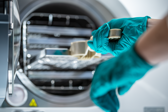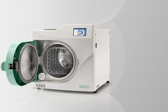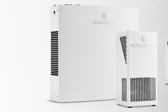Categories
Most Recent
Is a washer disinfector really worth it?
2nd Aug 2024 in Dental, Animal Health, HealthcareThere are many challenges facing dental professionals today. From time restrictions to increasing patient expectations, changing regulations and constantly rising overheads, practice teams must optimise safety and efficiency in everything that they do. For this reason, technology has been widely implemented to streamline all manner of workflows, from clinical processes to infection control.
As such, the washer disinfector has become an ever more important piece of equipment for dental practices. Much like clinicians have introduced digital dentistry to upgrade treatment outcomes, many have also made use of washer disinfectors to enhance their instrument decontamination.
Manual cleaning vs automated
The first step of instrument decontamination – prior to sterilisation in an autoclave that renders appropriate items safe for reuse – is to remove all physical debris. Traditionally, this was achieved with manual cleaning. Following the dirty-to-clean workflow, staff would clean instruments of blood and other visible soiling in dedicated sinks.
However, there are issues with this method of cleaning. Firstly, there is a risk of sharps injury as professionals are handling instruments. Secondly, the manual cleaning process is unpredictable as the quality achieved has many variables, and therefore cannot be validated. If any visible debris is found on the instruments at any point after this step, the decontamination process must be restarted, costing the practice time and money.
The washer disinfector is a more effective alternative. It provides an automated and validated method of cleaning and also thermal disinfection that increases the reproducibility of this important pre-sterilisation step. The nature of the equipment also means that it is easier to demonstrate compliance with the relevant regulations. Unbiased and robust data will be recorded to show that adequate conditions were met during each cycle to ensure the effective cleaning and disinfection of the instruments.
In addition, needle-stick injuries are reduced because staff need only place the instruments into the machine and then leave the technology to do the rest. Hands-free instrument trays are also available to further minimise the risk of needle stick injury among staff.
Time savings
As briefly mentioned above, time can be optimised with a washer disinfector. Not only does the equipment minimise the risk of having to repeat the instrument sterilisation process, but it also improves workflow efficiency for the team. Staff can perform other tasks while the washer disinfector cleans and disinfects the instruments, increasing productivity while giving the team more time to focus on patients. The time saved every day quickly adds up, covering the initial investment cost quicker than you might think.
Not a new innovation
The washer disinfector is not a new development in dentistry. Not only has it been around for many years but a large proportion of dental practices across the UK are already making the most of the efficiency and peace of mind that the equipment affords.
In Scotland, SDCEP guidelines[i] mandate a thermal washer disinfector be implemented within every dental practice. In England, the equipment is recommended as part of the Department of Health’s HTM 01-05 best practice guidelines.[ii] The businesses that have not yet introduced the equipment should do so soon to avoid being left behind given the ever-more meticulous infection control standards being maintained in dentistry today.
Making it work for you
If you are taking the next step towards best practice, it’s important to know your options with regards to washer disinfectors. For a start, they often don’t require as much space as people think. Different models are available, including benchtop and under-bench designs. They are built to be compact so that they fit within even a small decontamination room or area.
If the initial financial outlay is the greatest barrier your business faces, then different purchasing options could be beneficial. For example, some of the leading equipment is available on a lease basis, meaning no upfront sum is necessary for simpler budgeting. Plus, this gives you the option to either complete payment and own the technology at the end of the agreement or swap it in for a newer model.
Finally, there are highly effective ways of protecting your equipment and your investment that will truly maximise your investment. The expert in decontamination, Eschmann, offers the unique Care & Cover package, which includes all the necessary testing, validation, servicing and maintenance required to keep your washer disinfector functioning optimally for years. Both the Hydrim C61 benchtop and Miele PG8581 under bench models from Eschmann are also available either for purchase or lease, ensuring the best option for you and your business, whatever your needs.
Don’t get left behind
If you don’t yet utilise a washer disinfector, consider changing this before your practice gets left behind. The safety of staff and patients alike is a priority, so achieving this in the most efficient, validated and cost-effective way is essential. A washer disinfector enables automated instrument reprocessing from start to finish, making it a crucial piece of equipment for every dental practice.
[i] Cleaning of Dental Instruments Dental Clinical Guidance Second Edition Scottish Dental Clinical Effectiveness Programme SDcep. (2014). [online] Available at: https://www.sdcep.org.uk/media/rq4n5tnn/sdcep_cleaning_of_dental_instruments_2nd_edition_jan2016 .pdf [Accessed 14 Sep. 2022].
[ii] Decontamination Health Technical Memorandum 01-05: Decontamination in primary care dental practices 2 0 1 3 e d i t i o n. (2013). [online] Available at: https://www.england.nhs.uk/wp-content/uploads/2021/05/HTM_01-05_2013.pdf [Accessed 22 Aug. 2022].









